
There’s something special about seeing your city through the eyes of travellers. It makes you fall in love with the most mundane things all over again. All of a sudden, the pavements feel charming and your banchan(side dishes) taste even better.
That’s what happened to me last weekend when a group of close friends flew into Seoul to spend a weekend with me. I had the joy of playing host and tour guide, taking them through some of my favorite neighborhoods and discovering a few new ones thanks to their curiosity.
We are a diverse group from different countries and industries: a French Lebanese architect, an American professor, an Australian diplomat, a Brazilian journalist and German financial planners. Naturally, what followed was a whirlwind of food, art, culture, history and nightlife filled with a lot of soju.
I curated this itinerary with the goal of showing my friends the Seoul I know and love—not just the tourist highlights, but the places locals return to over time. Seoul is a city of layers, and I wanted our weekend to reflect that: the contrast between centuries-old hanoks and sleek cocktail bars, the comfort of home-style meals and the surprise of fusion dishes done right. Here’s how we spent four days soaking in the best of Seoul.
Thursday: Welcome Feast and Late Night Toasts

(Image source: Yukjeupdang)
After everyone landed in the afternoon, we kicked off the weekend with a classic Korean BBQ dinner at Yukjeupdang near Gwanghwamun. The name of the restaurant literally means “Juicy party” and it lived up to the hype. With dedicated staff grilling juicy cuts of pork and beef tableside, we could focus on catching up and savoring every bite. It has big tables and rooms available for group bookings and you can order from a screen attached to the table in both Korean and English. We also shared a plate of Korean-style beef tartare tossed in sesame oil, sliced pear and egg yolk, and some spicy soft tofu soup.
Post-dinner, we wandered over to Jonggak Avenue of Youth which is around 15 minutes-walk from the restaurant. It’s a bustling pedestrian street that’s busy both during the day and weekend. Its location in the central business district attracts everyone for lunch during the office hours as well as post-work dinner and drinks. With its neon lights, street performances, and clusters of bars and dessert cafés, the area pulses with youthful energy and late-night charm.
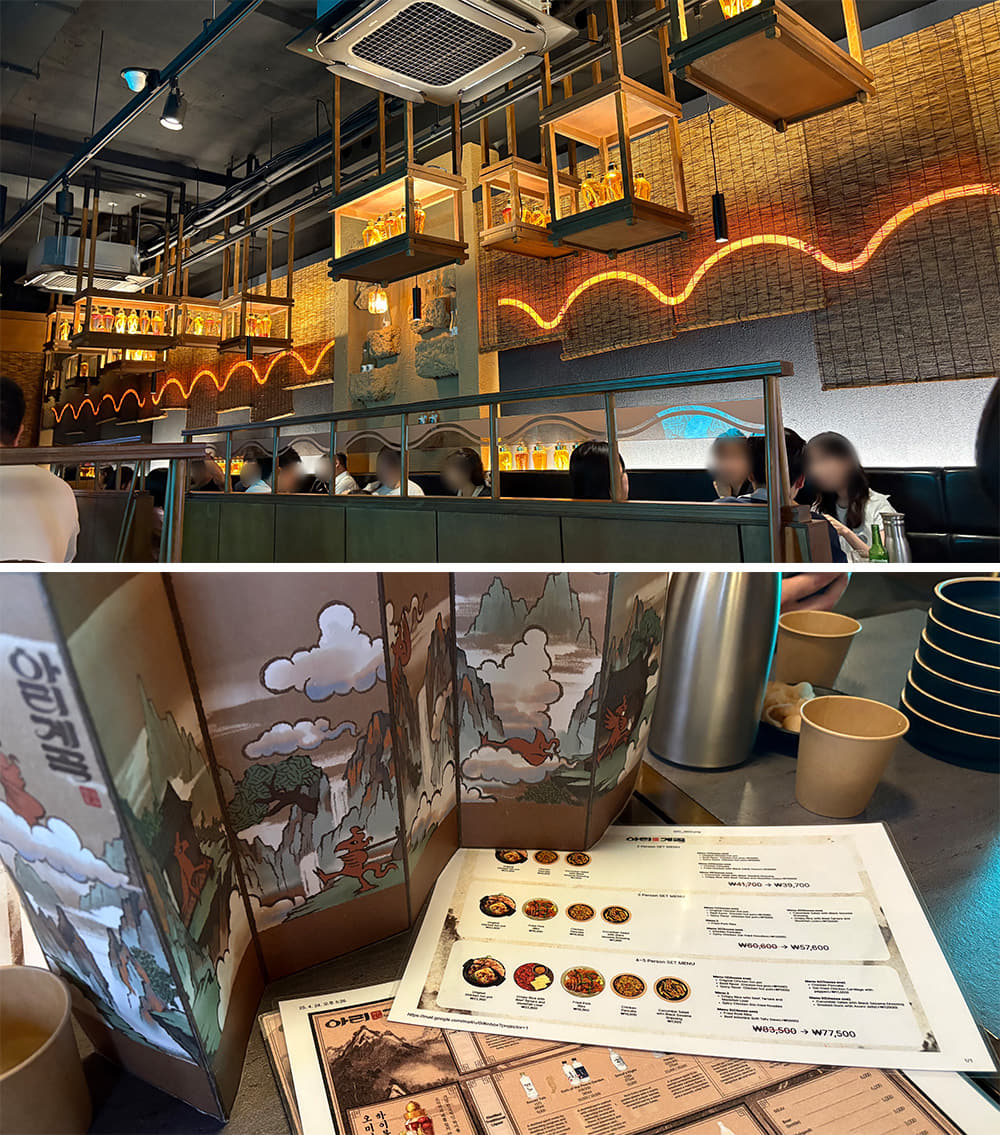
Yukjeupdang 육즙당
 10-1, Saemunan-ro 5-gil, Jongno-gu, Seoul
10-1, Saemunan-ro 5-gil, Jongno-gu, Seoul
 Mon–Sun: 11:00–22:00
Mon–Sun: 11:00–22:00
 Gwanghwamun Station (Line 5), Exit 8
Gwanghwamun Station (Line 5), Exit 8
From there, we had a night cap at a place called Ari Valley, a cozy two-story spot that feels like a renovated hanok with its woody interiors. The place also had English menus with very detailed descriptions so it saved a lot of time as they do have a pretty extensive menu. We shared a premium soju called Hwayo and Boksoondoga Makgeolli (rice wine) paired with phenomenal desserts. Even some of my friends who have never tried rice wine before were very impressed and started googling shops back home where they can find Boksoondoga which has more refreshing flavor due to its natural carbonation. Like most Korean local bars, they require you to order at least one food item but we were very full from dessert so we went for the two dessert items on the menu which were mango bingsu (shaved ice) with pineapple sherbert and vanilla ice cream with Yakgwa cookie and sweet potato sticks.
It was enjoyable discussing the little details of how Ari Valley stayed true to its theme, serving their dishes and drinks in a miniature Korean onggi, a traditioinal earthenware pottery. The plate was decorated with Injeolmi powder made of roasted soybeans, and the mango bingsu at Ari Valley was styled to look like radish kimchi—a playful nod to Korean dining culture. My friends loved the visual trick and how it blended tradition with whimsy, something they hadn’t seen anywhere else.

Ari Valley 아리계곡 종각점
 41, Ujeongguk-ro 2-gil, Jongno-gu, Seoul
41, Ujeongguk-ro 2-gil, Jongno-gu, Seoul
 Sun–Thu: 16:30–02:00 / Fri - Sat : 16:30 - 03:00
Sun–Thu: 16:30–02:00 / Fri - Sat : 16:30 - 03:00
 Jonggak Station (Line 1), Exit 4
Jonggak Station (Line 1), Exit 4
Friday: Design Walks and the Sleepless Night
We started the day in Yeonhui-dong, a quiet neighborhood known for its unique architecture and spacious homes. Unlike the high-rise apartments that dominate Seoul’s skyline, Yeonhui is dotted with large houses–a legacy of its history as a residential area for the rich and the powerful. Its former residents include Seo Taiji, the legendary musician who revolutionized Korean pop music, and Park Seo-bo, a pioneering figure in Korean modern art and the father of the Dansaekhwa movement.
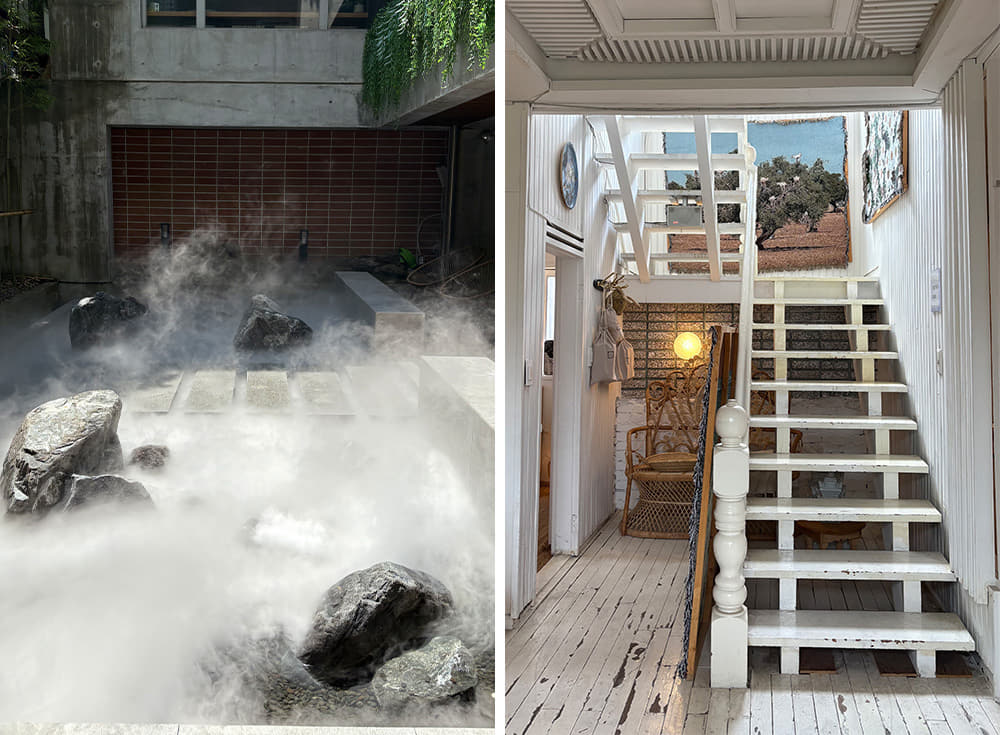
Here you’ll find freestanding houses, many built in the mid-20th century with distinctive Korean-modernist touches–flat roofs, exposed brick, and large windows that blend traditional aesthetics with international influences. Our architect friend couldn’t stop admiring the Korean-modernist homes in Yeonhui-dong. In fact, even in the August heat, we walked around for two hours exploring the streets.
Beyond the homes, Yeonhui-dong is full of small boutique stores, organic groceries, and well-designed cafés that give it a vibe reminiscent of neighborhoods in New York or London. We stopped by TTA, a stylish home goods store offering a curated selection of ceramics, textiles, and lifestyle items—perfect for anyone looking to bring a bit of Seoul design back home.
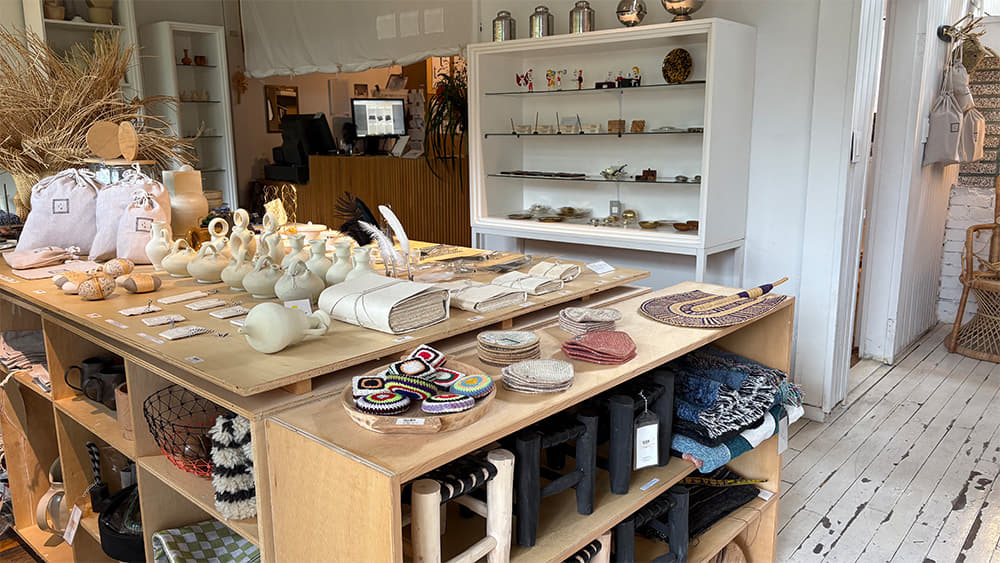
TTA
 28-5, Yeonhui-ro 11-gil, Seodaemun-gu, Seoul
28-5, Yeonhui-ro 11-gil, Seodaemun-gu, Seoul
 Mon–Sun: 12:00–20:00
Mon–Sun: 12:00–20:00
We had brunch at Rhubarb, a café that my family and I have been frequenting for years because of their signature carrot and pollack roe pasta. It’s a charming place known for that matches the neighborhood’s laid-back vibe serving fresh, veggie-forward dishes like avocado toast and whole wheat pancakes.
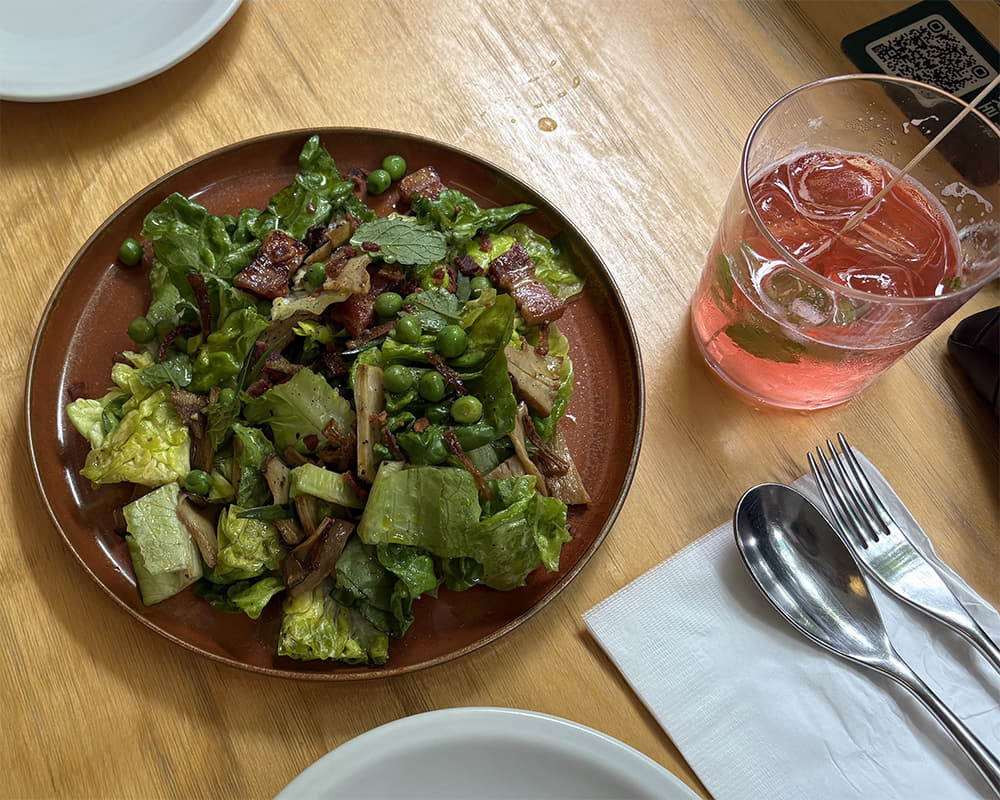
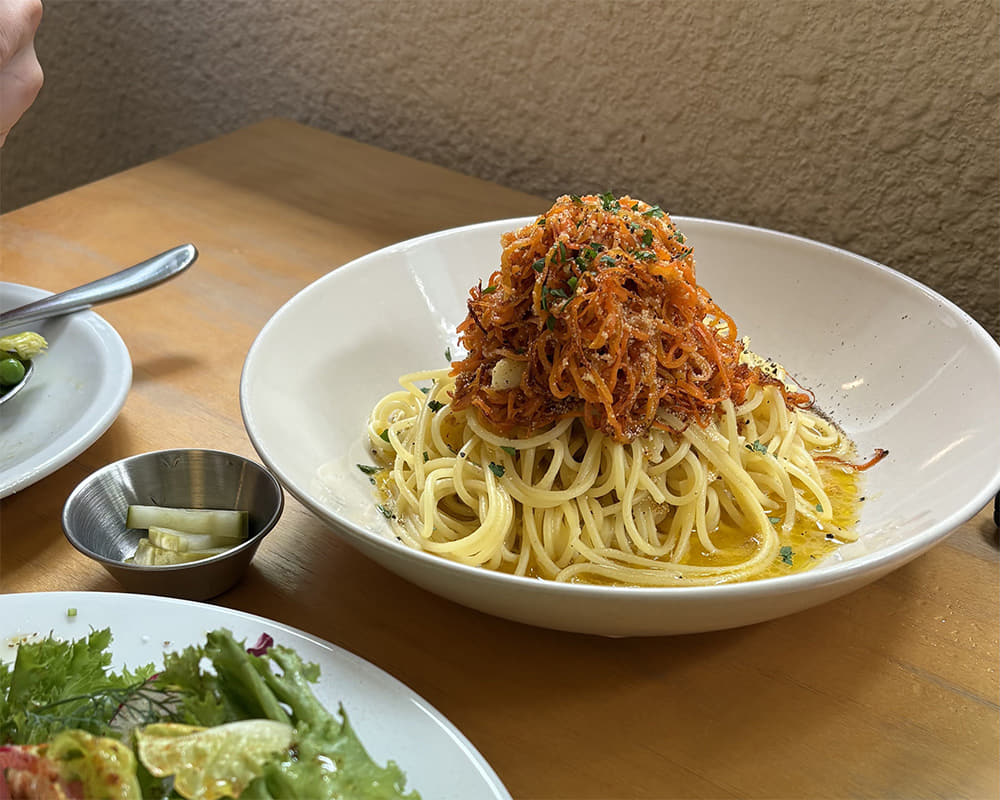
Rhubarb
 47, Yeonhui-ro, Mapo-gu, Seoul
47, Yeonhui-ro, Mapo-gu, Seoul
 Wed–Mon: 08:30–17:00
Wed–Mon: 08:30–17:00
In the afternoon, we shifted gears with an architecture walk through Gangnam. With an architect friend leading the way, we explored design highlights like the Starfield Library at COEX and the Kring building, discussing materials, forms, and the stories behind each structure. My architect friend was a big fan of Unsangdong Architects, the firm behind the Kring Culture Complex, known for their unconventional approach.
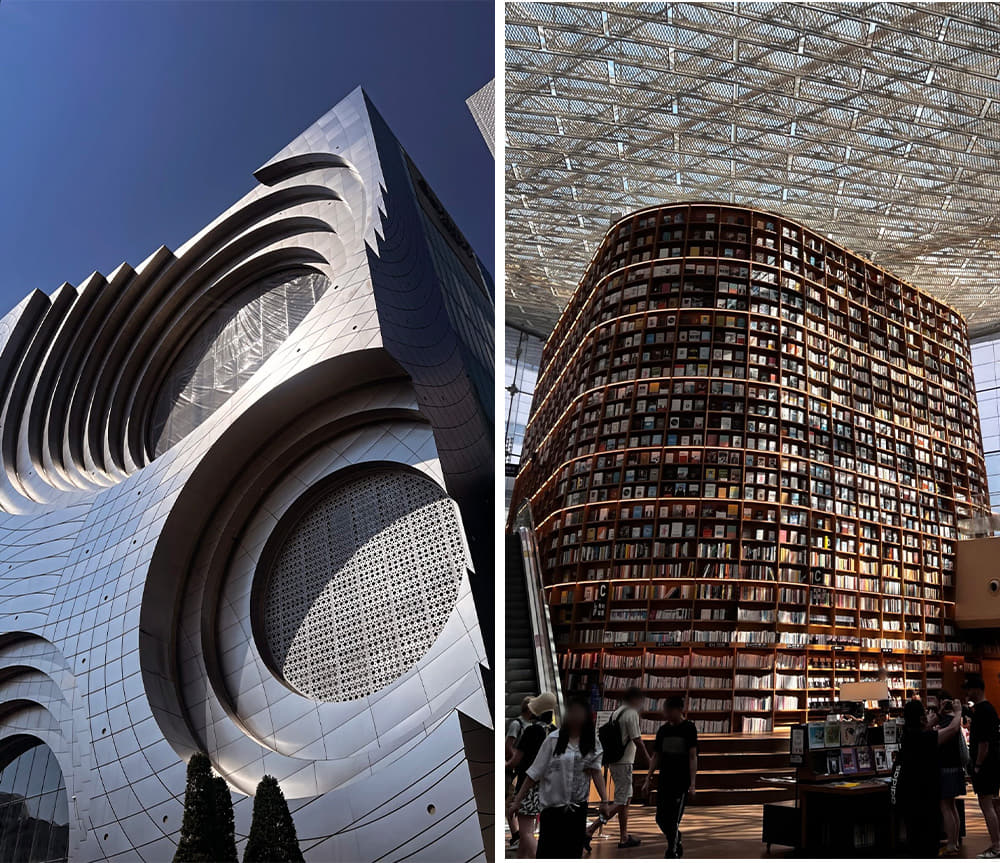
After a quick hotel break to escape the heat, we regrouped for pre-dinner cocktails at Charles H., the speakeasy-style bar at the Four Seasons Hotel. Ranked among Asia’s 50 Best Bars, it’s a must-visit spot for cocktail lovers. Some of my friends pointed out the bar has been featured in many Korean dramas where the chaebols gather for drinks.

(Image source: Four Seasons)
There is an entrance fee of 10,000 Korean won per person if you’re not staying at the hotel but trust me, it’s worth it. You’re also served welcome drinks and snacks upon seating. With dim lighting, plush seating, gorgeous fixtures on the ceiling, you’re invited to a very exclusive luxurious experience with impeccable service. Drinks here are as refined as the setting with narrative-driven cocktails often using seasonal Korean ingredients.
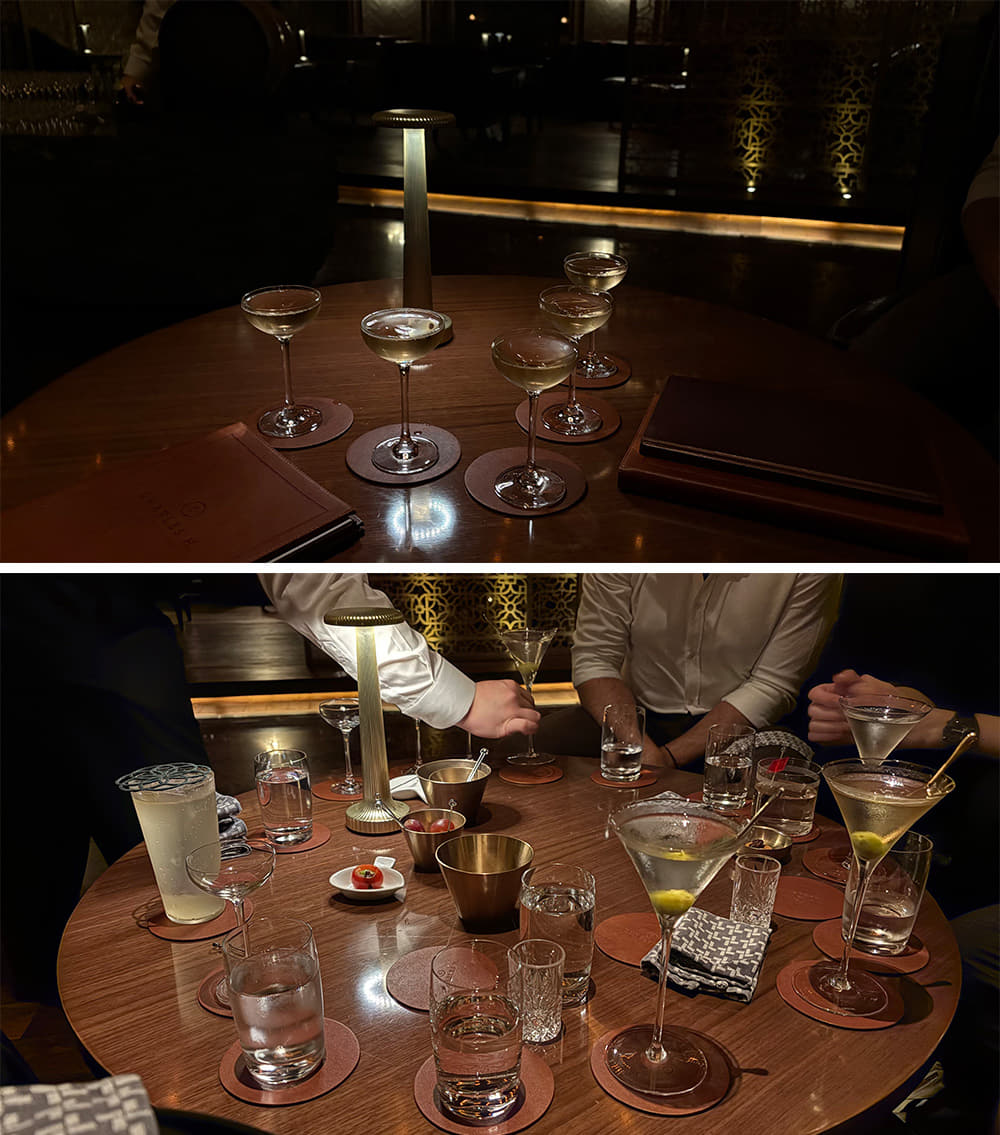
Charles H
 LL Floor, 97, Saemunan-ro, Jongno-gu, Seoul
LL Floor, 97, Saemunan-ro, Jongno-gu, Seoul
 Mon-Sun: 18:00–01:30
Mon-Sun: 18:00–01:30
Dinner followed at IDA, a contemporary Korean restaurant tucked into the end of Seosulla-gil, one of Seoul’s trendiest streets. The space is intimate and looks out to Jongmyo shrine that adds a serene, almost sacred backdrop to the meal. I’ve been a regular customer here for about seven years and ended up becoming close friends with the chef who masterfully blends Korean flavors and ingredients with modern techniques every season.
One huge upside to traveling with a group of foodies is that we can order nearly everything on the menu to share. Its cheese-topped beef tartare, morel mushroom ‘dumplings’ stuffed with tuna, beet burger with bacon jam and gnocchi are some of the popular staples there. My friends were genuinely surprised to find such high-quality Western and fusion cuisine in Seoul. The gnocchi at IDA wasn’t just good—it was unexpectedly excellent, especially in a city where they expected mostly Korean fare. It’s a testament to Seoul’s evolving food scene, where global flavors meet local creativity. You can also try a curated selection of natural wines and traditional Korean liquors with your meal.
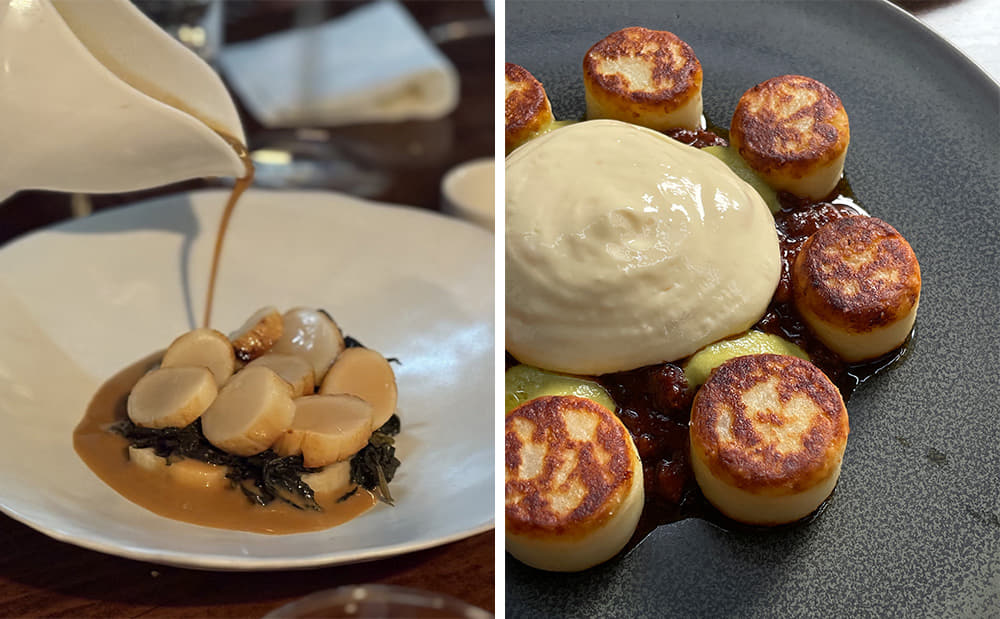
(Second Image source: IDA / Menu changes regularly)
We also strolled the area post-meal, enjoying the mix of shops, bars, galleries and restaurants nestled beside the palace wall. From cocktail bars like Orb of Light to lively pubs like Seoul Gypsy, the area offers a perfect mix of tradition and trend. Whether you're in the mood for tacos at Bittle’s Taco or vinyl tunes at Doldam, there's something for every kind of night out.
IDA
 153, Seosunra-gil, Jongno-gu, Seoul
153, Seosunra-gil, Jongno-gu, Seoul
 Mon-Sun: 12:00–22:00
Mon-Sun: 12:00–22:00
 Anguk Station (Line 3), Exit 3
Anguk Station (Line 3), Exit 3
Saturday: Markets, Shopping and a Feast Worth the Wait
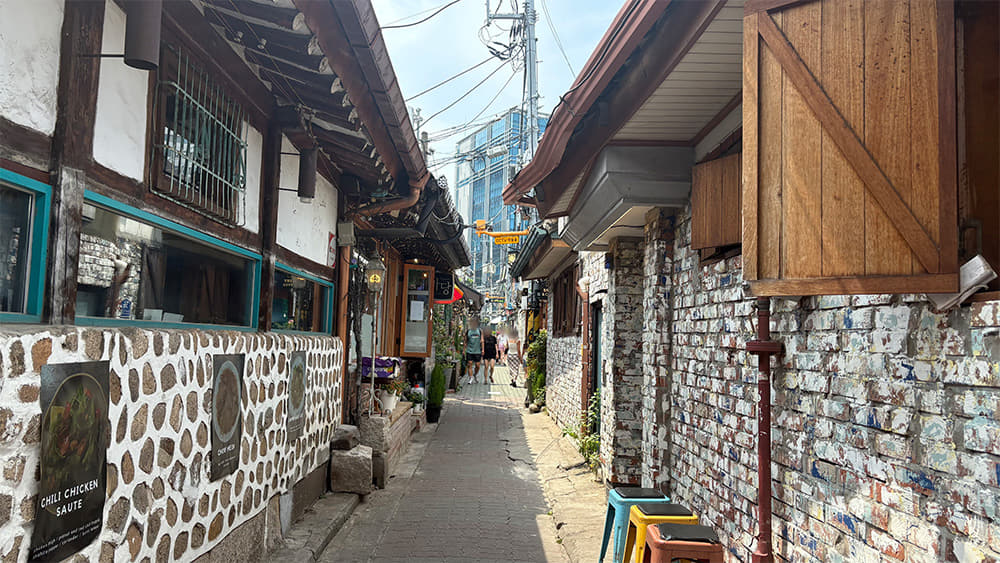
We met mid-morning for a walk through Ikseon-dong, one of Seoul’s oldest hanok villages. Built in the 1930s, this neighborhood was originally developed to provide affordable housing in the form of hanoks—traditional Korean homes with tiled roofs, wooden beams, and courtyards. Today, Ikseon-dong is a vibrant blend of old and new, where century-old architecture houses trendy cafés, boutiques, and dessert shops. The narrow alleyways and restored hanoks give the area a “newtro” (new + retro) vibe that’s both nostalgic and stylish.

After snacking on salt bread at Jayeondo, we headed to Onmigwan near Anguk Station for lunch. One of the highlights was Eobok-jaengban, which translates to Boiled Beef Slices Hot Pot—a luxurious North Korean dish featuring thinly sliced brisket, tongue, and tripe arranged on a brass platter, then simmered in a clear broth with toppings like egg strips and green onions.
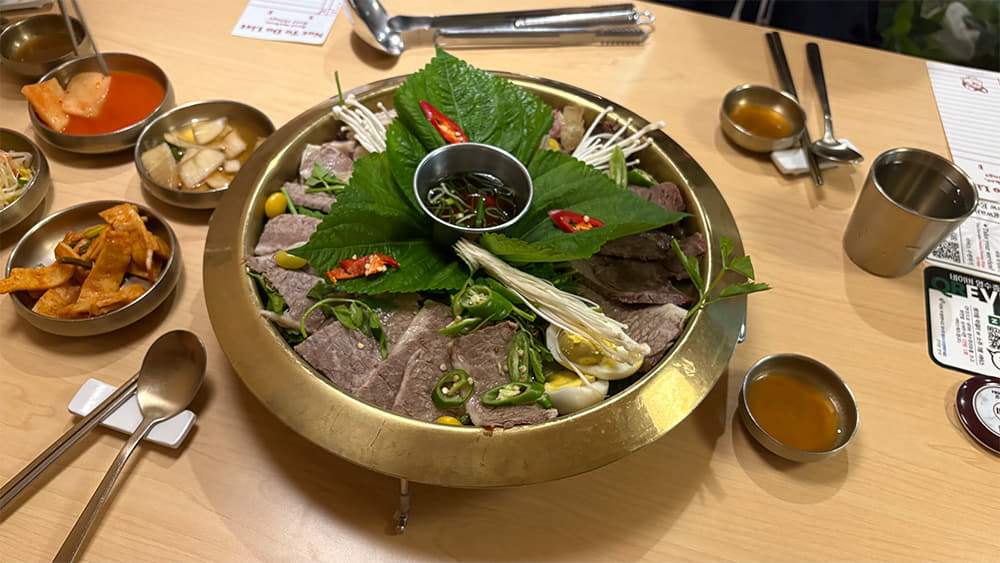
Jayeondo 자연도소금빵&자연도가
 21-17, Supyo-ro 28-gil, Jongno-gu, Seoul
21-17, Supyo-ro 28-gil, Jongno-gu, Seoul
 Mon-Sun: 09:00–22:00
Mon-Sun: 09:00–22:00
 Jongno 3-ga Station (Lines 1, 3, 5), Exit 4
Jongno 3-ga Station (Lines 1, 3, 5), Exit 4
Onmigwan 온미관 안국
 5-4, Bukchon-ro 2-gil, Jongno-gu, Seoul
5-4, Bukchon-ro 2-gil, Jongno-gu, Seoul
 Mon-Sun: 11:00–22:00
Mon-Sun: 11:00–22:00
 Anguk Station (Line 3), Exit 2
Anguk Station (Line 3), Exit 2
After lunch, we explored the Seoul Folk Flea Market, one of the city’s most eclectic and nostalgic shopping destinations. Located near Cheonggyecheon Stream, this sprawling indoor market is divided into color-coded zones, each offering a different slice of Korea’s past and present. From vintage electronics and vinyl records to hanji crafts, porcelain, and vintage clothing, the market is a treasure trove of folk items, antiques, and quirky finds.
The vibe is a mix of old-school charm and curious oddities, with vendors chatting over cups of tea and shoppers hunting for one-of-a-kind souvenirs. I also ended up buying a set of hand-carved wooden plates shaped like mallard ducks.
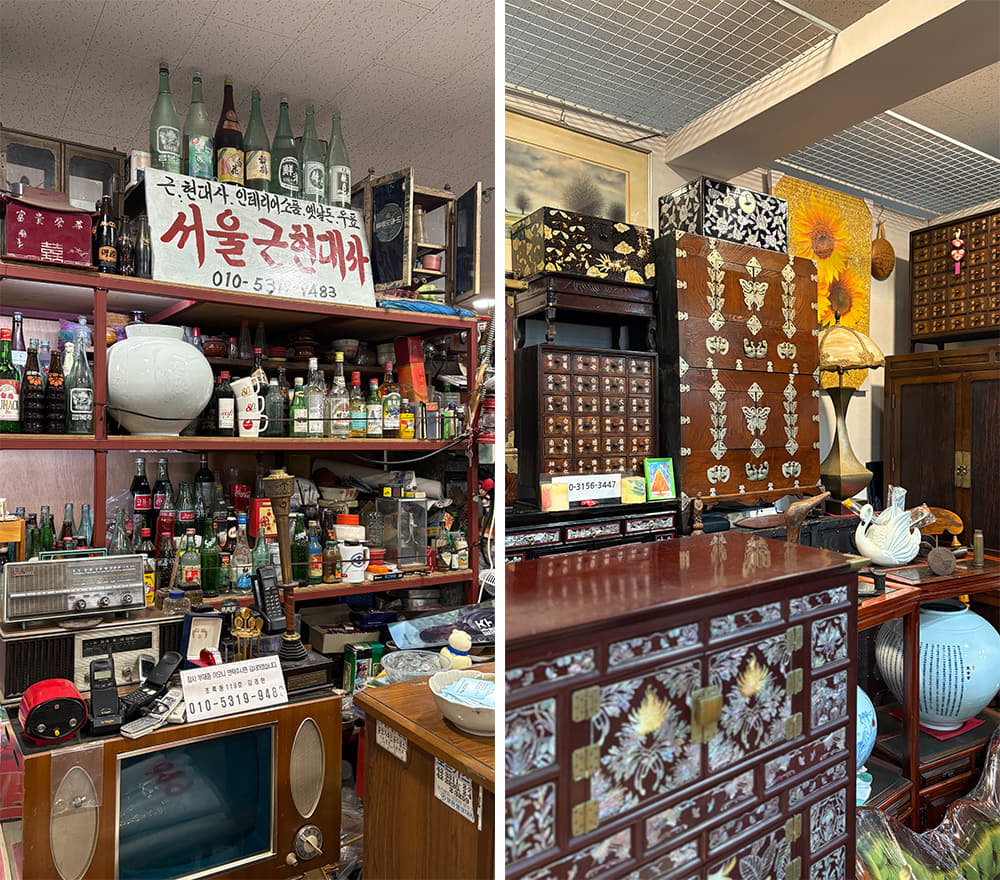
In the afternoon, we headed to Seongsu, Seoul’s answer to Brooklyn, for shopping at cult-favorite brands. Once a hub for shoe factories and workshops, the neighborhood has transformed into a hotspot for design-forward boutiques, artistic pop-ups, and aesthetic cafés housed in repurposed warehouses and red-brick buildings. We only had a couple of hours before dinner so we rushed through some of the highlights in clothing, jewelery and cosmetics. We started at the Tamburins flagship store, a stunning space that feels more like an art installation than a retail shop. From there, we explored a range of shops from Raive for minimalist fashion and Noirmood for premium silver jewelery and Osoi for sculptural leather bags.
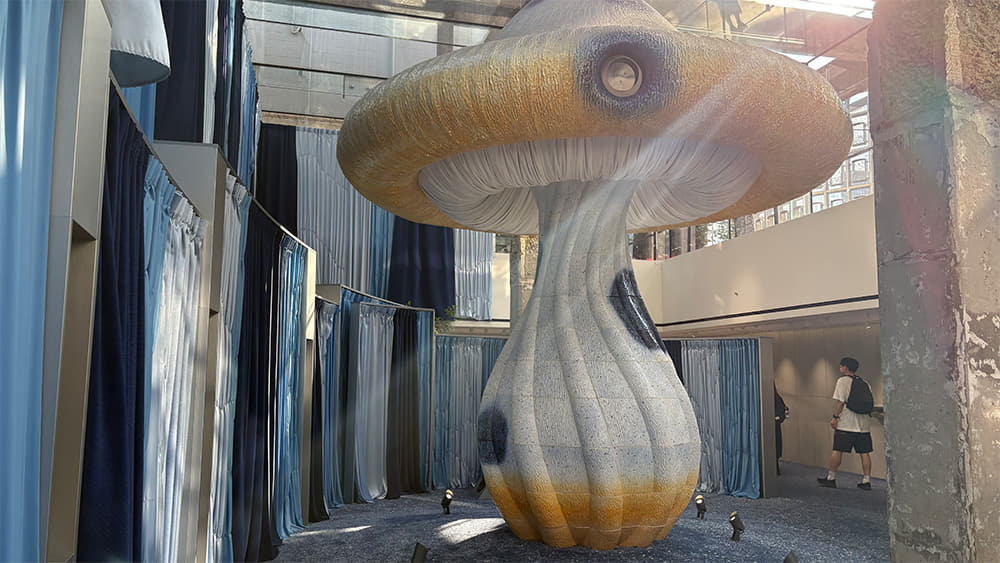
Dinner was at Bubbles and Cockles in Hannam, a beloved spot so popular that we found ourselves behind 27 other parties. No problem—while waiting, we enjoyed cocktails and music at SATZ, then returned for a late-night feast of octopus pancake, grilled tilefish, and tossed chicken noodles with soju bombs. We devoured everything under two hours, the maximum time allowed per table on a busy night, according to their policy.

(Image source: Bubbles and Cockles)
Sunday: Art, Tradition, and a Perfect Farewell
By this point in the weekend, I could tell the itinerary was doing exactly what I’d hoped—giving my friends a real sense of Seoul’s personality.
After a wild night out, we started the day late with a walk through Hannam-dong, browsing local brands and cafes while waiting for our table at Parc for lunch. Inspired by the owner’s mother’s home cooking, the restaurant serves authentic Korean comfort food using seasonal ingredients. It really feels like stepping into a friend’s house for a lovingly prepared meal. We ordered a set that included bulgogi, grilled mackerel, and seasoned deodeok, served with a variety of side dishes and soup—a perfect way to experience Korean home-style dining.
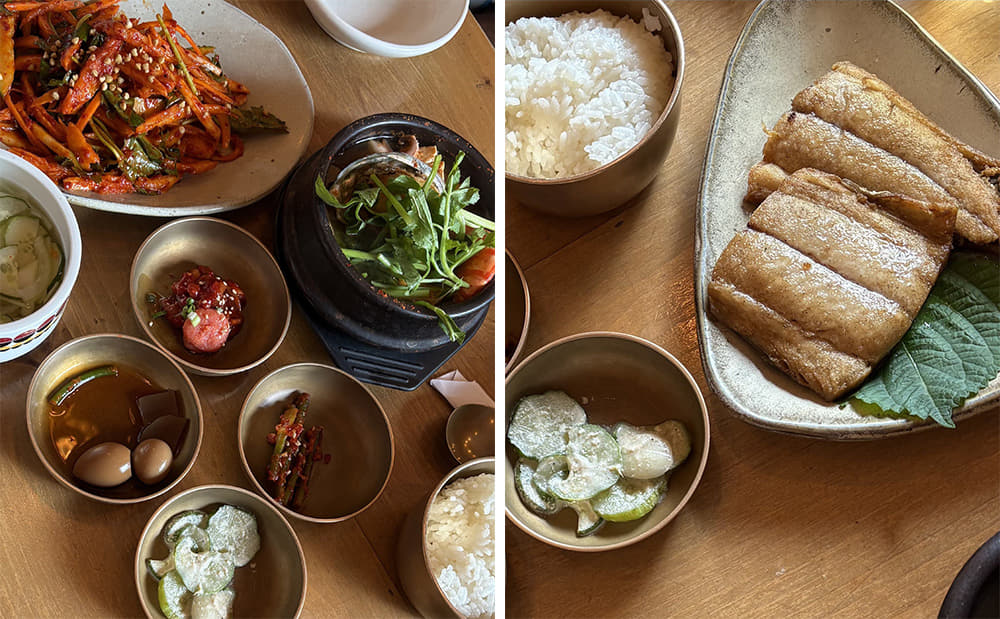
Parc 빠르크
 26-5 Itaewon-ro 55-ga-gil, Yongsan-gu, Seoul
26-5 Itaewon-ro 55-ga-gil, Yongsan-gu, Seoul
 Mon-Sun: 11:30–21:00
Mon-Sun: 11:30–21:00
 Hangangjin Station (Line 6),Exit 1
Hangangjin Station (Line 6),Exit 1
After lunch, we spent hours at the Leeum Museum of Art, one of Seoul’s most architecturally stunning and culturally rich institutions. Designed by world-renowned architects Mario Botta, Jean Nouvel, and Rem Koolhaas, the museum is a visual experience in itself. The two main spaces inside showcase traditional Korean art from ceramics to calligraphy and contemporary works by Korean and international artists. It’s refreshing looking at old Joseon jars, Shilla Dynasty golden accessories and paintings by South Korean modern art masters with your visiting friends. We even had a full 10-minute discussion about how one of the curvy wooden chairs in the hallway was assembled.
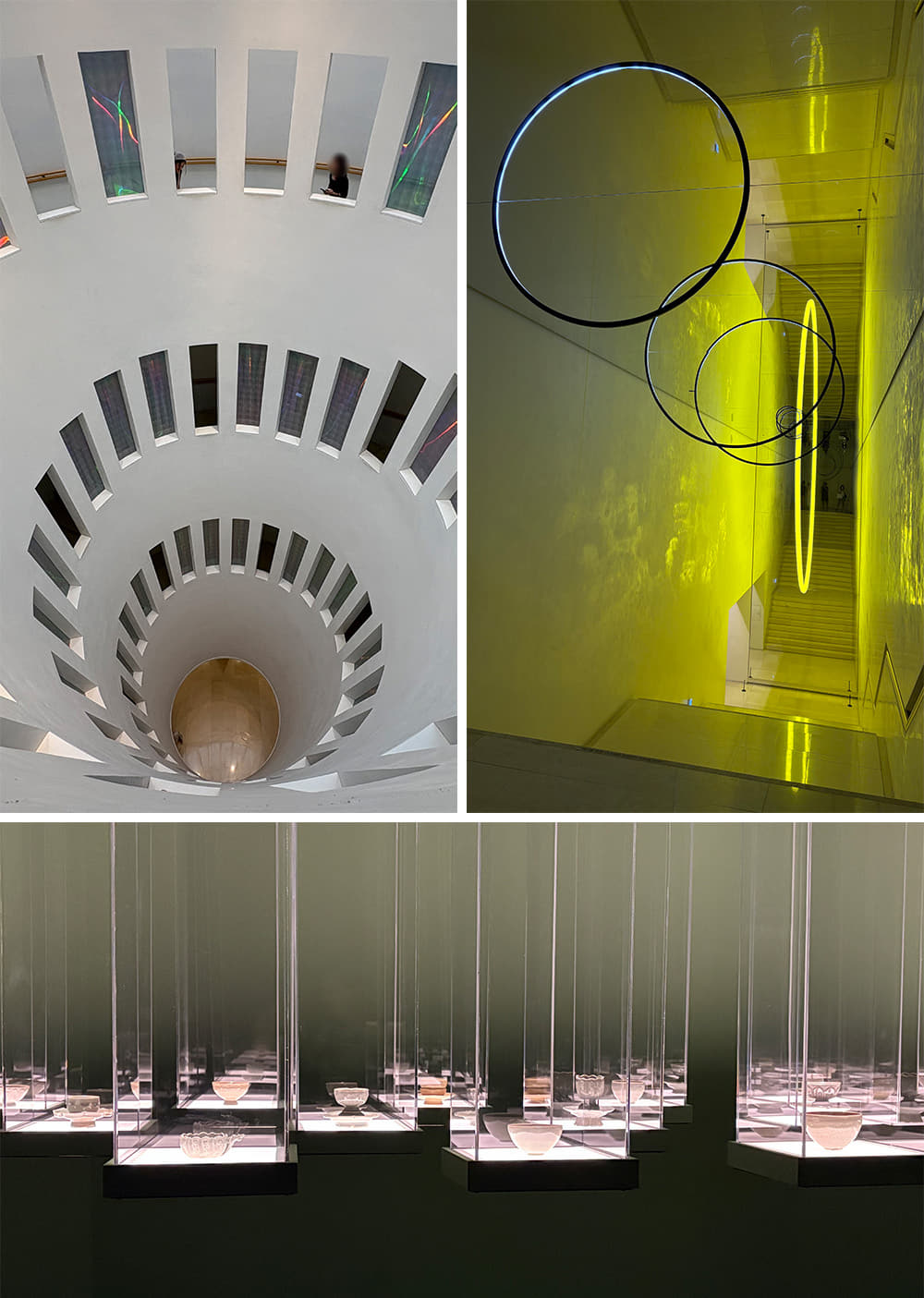
Later, we walked to Haebangchon and stopped at Namsan Sool Club, a hidden gem for lovers of traditional Korean liquor. With over 100 varieties of craft sool—from makgeolli and yakju to cheongju—the bar offers the world’s largest “by-the-glass” menu of premium Korean alcohols. The staff, including multilingual sool sommeliers, guide you through each pour with stories about the brewers, ingredients, and techniques.
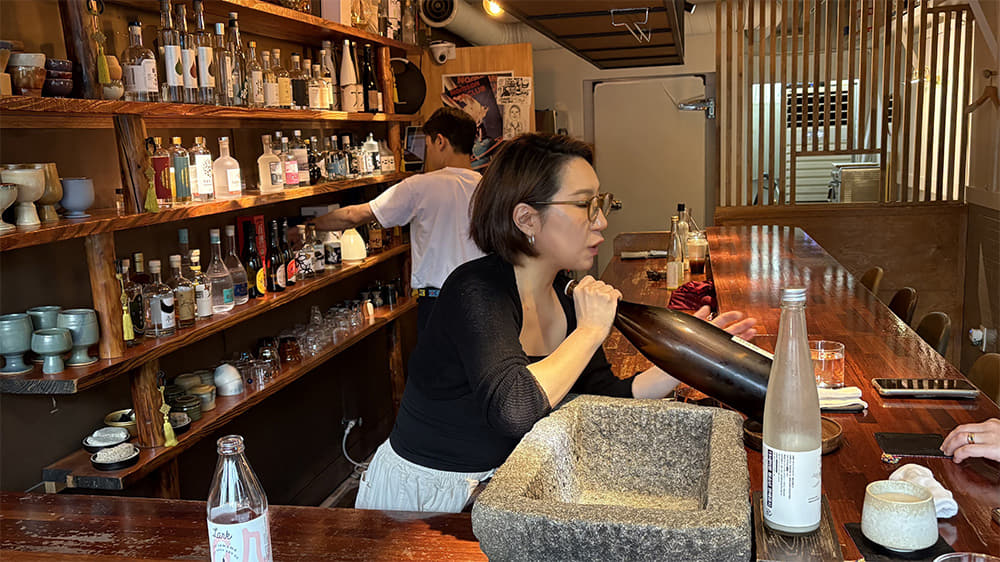
Namsan Sool Club 남산술클럽
 228-2 Noksapyeong-daero, Yongsan-gu, Seoul
228-2 Noksapyeong-daero, Yongsan-gu, Seoul
 Wed-Mon: 18:00–01:00
Wed-Mon: 18:00–01:00
 Noksapyeong Station (Line 6),Exit 2
Noksapyeong Station (Line 6),Exit 2
Tasting handcrafted Korean liquors together was a revelation. My friends were amazed by the depth and variety—from yakju brewed by a grandmother using ancient methods to sparkling makgeolli. Thanks to its owner well-versed in history and heritage, it was a cultural deep dive they hadn’t expected.
Hosting my friends in Seoul reminded me just how much this city has to offer—whether you're into food, design, history, or nightlife. Showing the Seoul I love and seeing it through their eyes made familiar places feel fresh again, and curating this itinerary was one of the most rewarding parts of the weekend. What surprised them most was how Seoul blends tradition with trend so effortlessly. From hanok alleyways serving modern desserts to cocktail bars using ancient liquors, the city constantly reinvents itself while staying rooted in its culture.
If you're planning a trip with a group, I wholeheartedly recommend following these courses, perhaps even just taking a couple pointers. It’s paced just right, with a mix of iconic spots and hidden gems, and enough flexibility to let the city surprise you.
